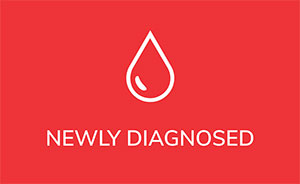Take Away Points:
- There are not usually any symptoms at time of diagnosis.
- CLL is most often unexpectedly discovered on a routine blood test for an unrelated problem.
- Symptoms may develop and even may be present at the time of diagnosis, especially fatigue which can be profound.
Preface:
Hematology in general and CLL specifically are full of jargon and acronyms that can be both overwhelming and daunting. With time and experience, you’ll become familiar with the terminology and acronyms. We will try to explain each medical term the first time it appears in an article, but we will use the true terminology so that you gain comfort and familiarity with the medical terms that you will see in your lab reports and in medical articles. We have provided a list of abbreviations and acronyms as well as a glossary for your reference.
Symptoms:
Fatigue:
Dr. Tom Kipps of the Moores Cancer Center at the University of California San Diego is a well-known world expert on CLL. Here he describes the nature of the CLL associated fatigue.
Fatigue is not a trivial problem and needs to be addressed in a serious manner. Fortunately there are some excellent treatment options for our cancer related fatigue.
B Symptoms:
The onset of classic “B symptoms” (by the way, there are no A symptoms as “A” refers to the absence of symptoms in the Ann Arbor system used for staging of some types of blood cancer) is a sign that the cancer may be active. Any one of these symptoms demands at a minimum a thorough work-up.
They are also a well recognized and widely agreed upon an indication for starting treatment of our CLL.
Below is the official list of B symptoms.
- Unexplained weight loss >10% of body weight in the previous 6 months
- Severe fatigue (unable to work or perform usual activities)
- Fevers >38°C or 100.5°F for at least 2 weeks without evidence of infection
- Drenching night sweats (soaking the bed sheets) for more than a month without evidence of infection
- Another 5-10% of us first present with B symptoms.
Enlarged Lymph Nodes:
Another very common symptom found in more than half of new CLL patients is painless lymph nodes that wax and wane. They may later become painful or may grow together to form large masses of lymphoid tissue or they may be simply unsightly. Enlarged nodes may be presence even in the absence of an elevated white blood cell count.
Dr. Kipps discusses how enlarged lymph nodes figure into the diagnosis and management. When he says, “generalized lymphadenopathy” he means enlarged lymph nodes throughout the body.
Common sites for enlarged nodes mentioned in the video:
- axillary = armpits
- cervical = front and sides of neck
- supraclavicular = above the collar bones
Other sites for enlarged lymph nodes
- inguinal = groin
- occipital = base of the skull at the back of the neck
- epitrochlear = elbow
Other Symptoms:
An enlarged spleen, found in the upper left quadrant (quarter) of the abdomen, can cause abdominal symptoms including pain and a feeling of fullness.
An exaggerated response to insect bites such as mosquitoes is a frequent but under recognized problem in CLL.
Finally we can have symptoms from the common complications of our CLL. These tend to occur later in the disease and not at the time of diagnosis.
These secondary symptoms may result from:
- Low blood counts
- Low white blood cells: infections
- Low platelets: easy bleeding or bruising
- Low red blood cells: fatigue or shortness of breath or lightheadedness
- Secondary cancers
- Recurrent Infections (even in the absence of abnormal blood counts)
Despite all the possible symptoms that might occur most of us are blindsided by our diagnosis.
Our lives are turned upside down when we are told we have cancer yet we feel perfectly well.
Brian Koffman edited by Neil R.



